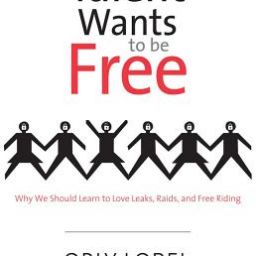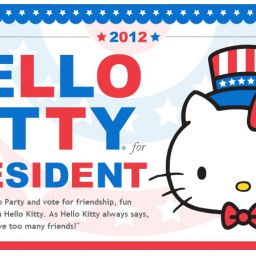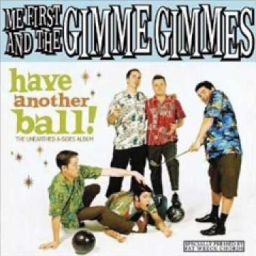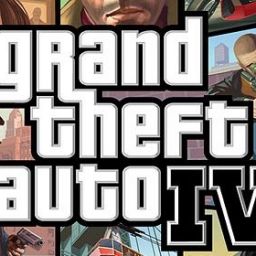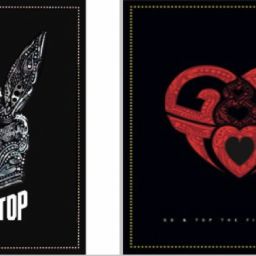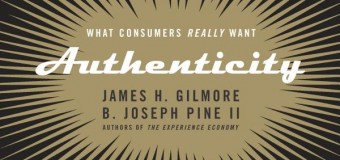
[youtube=http://www.youtube.com/watch?v=btcvSWoQWV0]
While applying marketing techniques in concert with authenticity isn’t something I will be using to help make my non-existent business reach a new level of confidence and power, there’s plenty of interesting stuff in James Gilmore & Joseph Pine’s Authenticity: What Consumers Really Want. Much of the interesting information came in the form of theory and charts. Lots of charts.
However, one aspect of this book that can be applied to understanding of fan culture, what the authors deem the five types of authenticity (the fifth is natural authenticity):
Original authenticity: People tend to perceive as authentic that which possesses originality in design, being the first of its kind, never before seen by human eyes; not a copy or imitation. Items on this polarity range from imitation to original.
Exceptional authenticity: People tend to perceive as authentic that which is done exceptionally well, executed individually and extraordinarily by someone demonstrating human care; not unfeelingly or disingenuously performed. Items on this polarity range from disingenuous to genuine.
Referential authenticity: People tend to perceive as authentic that which refers to some other context, drawing inspiration from human history, and tapping into our shared memories and longings; not derivative or trivial. Items on this polarity range from fake to real.
Influential authenticity: People tend to perceive as authentic that which exerts influence on other entities, calling human beings to a higher goal and providing a foretaste of a better way; not inconsequential or without meaning. Items on this polarity range from insincere to sincere.
Fandom and fan culture often works within these four types of authenticity, but often with the additional factor of changes over time. Oh, and did I mention that there wasn’t discussion of basics of communication theory (how speech is perceived varies based on both the speaker and the listener) and how that would influence perceptions of authenticity.
So let’s run through several examples of shifting views of authenticity of music performers using Gilmore & Pine’s framework:
First, an example of being “authentic” using the work of another: Madonna’s guitar solo cover of a Pantera song in concert. Madonna fans, used to her usage of cultural and musical elements from a variety of sources, accept this musical addition. They view her actions as a positive type of referential and influential authenticity. However, Pantera fans view Madonna as an insincere, disingenuous, and fake imitator; strumming a few bars doesn’t make one authentic; however living the hardcore lifestyle does. (Bonus round: Does Madonna playing Pantera break copyright law? Not if she paid for it, under mandatory licensing — and Phil Anselmo can’t (legally) stop her, either.)
Second, an example of trying to be “authentic” to two/three personas simultaneously: Mylie Cyrus/ Hannah Montana. Hannah Montana is a Disney television show/ concert series for tweens based around Mylie Stewart who attempts to hide her superstar alterego persona, Hannah Montana, from being discovered, thereby somehow achieving the “best of both worlds,” having a normal life and a superstar life simultaneously. An additional complication is that Miley/Hannah is played by Miley Cyrus, who performs as both herself and her alter-ego. And MileyHannah’s father is played by Miley’s real father.
The multiple layers of what is real and not, what is authentic and not have caused problems for Miley Cyrus, who has been criticized for behaving like an actual teenager (rather than a Disneyfied teen) and for participating in a bedhead Vanity Fair Leibowitz photo shoot. But to additionally think about HannahMiley/Miley like Foucault, what is the possibility of truth or authenticity when the identity is purposely mutable? In one memorable episode, My Boyfriend’s Jackson and There’s Gonna Be Trouble, Hannah (the character) pretends to date Jackson (the character’s brother), and over the course of the episode, Miley’s real/fake father comments about how strange it is to have his kids dating each other, yet compels them to continue to fake date. The “couple” is chased by paparazzi and interviewed about their romance on Oprah-lite, complete with couch-jumping declarations of love.
Real life disproves what the show is intending to accomplish — Miley the person does not have the ability to have a “real” life and a superstar life separately. But to fans, questions about who is the “original”, genuineness, derivativeness, and even authenticity are completely irrelevant! Even though there is no obvious authenticity because there is no good way to distinguish between what is intended to be authentic and what is intended to be an act, the consumers of Miley”Miley”Hannah will still consume and love their idol.
Third, an example of being “authentic” through an external filter: Rush playing their own song, Tom Sawyer, backstage on the Colbert Report on the videogame, Rock Band, scoring an accuracy rating of 31%. Assuming one was looking for authenticity at being Rush, the band presently calling itself Rush would fit all four types of authenticity. But what about Rock Band? It does serve as referential authenticity, asking players to be Rush, and falls somewhat in the middle range for exceptional authenticity — after all, the point of Rock Star is to experience an accurate rock star experience — at least as much as you can in your living room. But where Rock Star fails is in effectively repeating and “calling up” the authentic, if those that embody the experience of playing Tom Sawyer “the right way” can’t reproduce it effectively.
As a last minute treat, as thought experiment, the authors define recent bands as combinations of previous bands.
Led Zeppelin + Iggy Pop = Red Hot Chili Peppers
Jimi Hendrix + Tom Jones = Prince
The Doors + Paul McCarthy = Nirvana
As much as you may disagree with these, this one is …
The Clash + Bootsy Collins = Kid Rock
Just no. That is not authentic music math on any level.
This book is found in many libraries and if you want to buy it, the ISBNs are 9781591391456 1591391458


